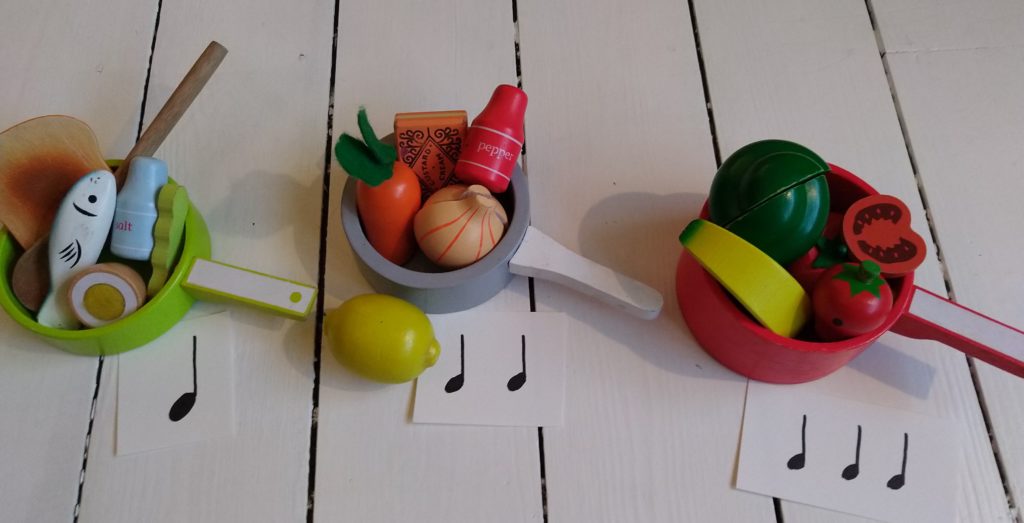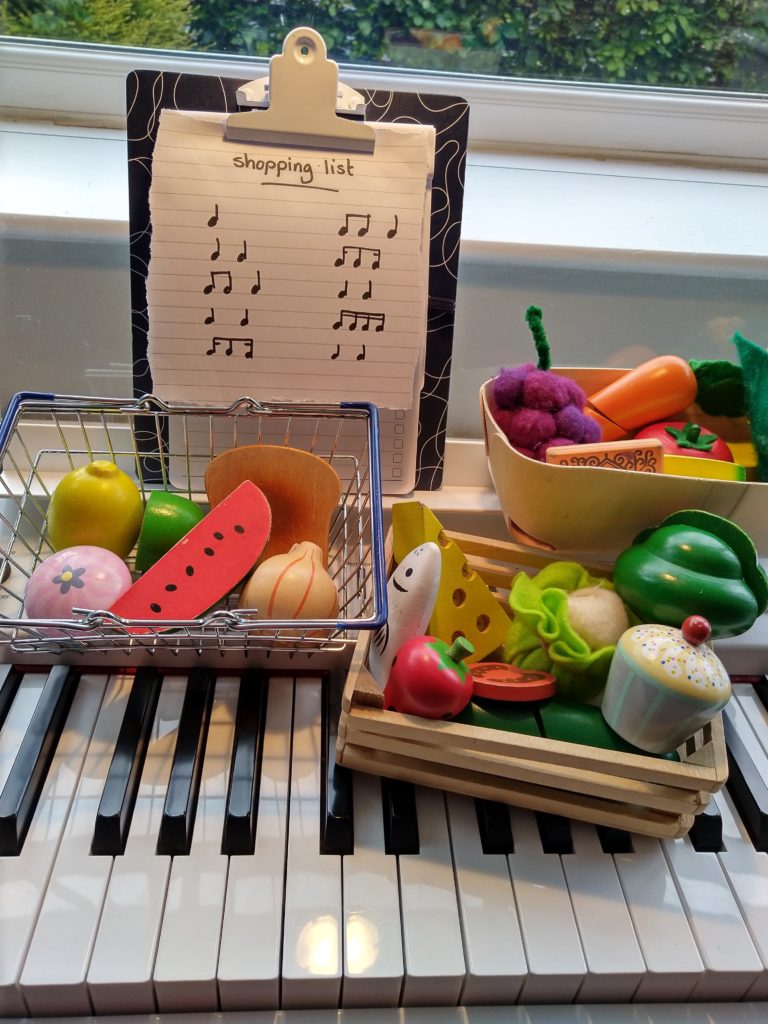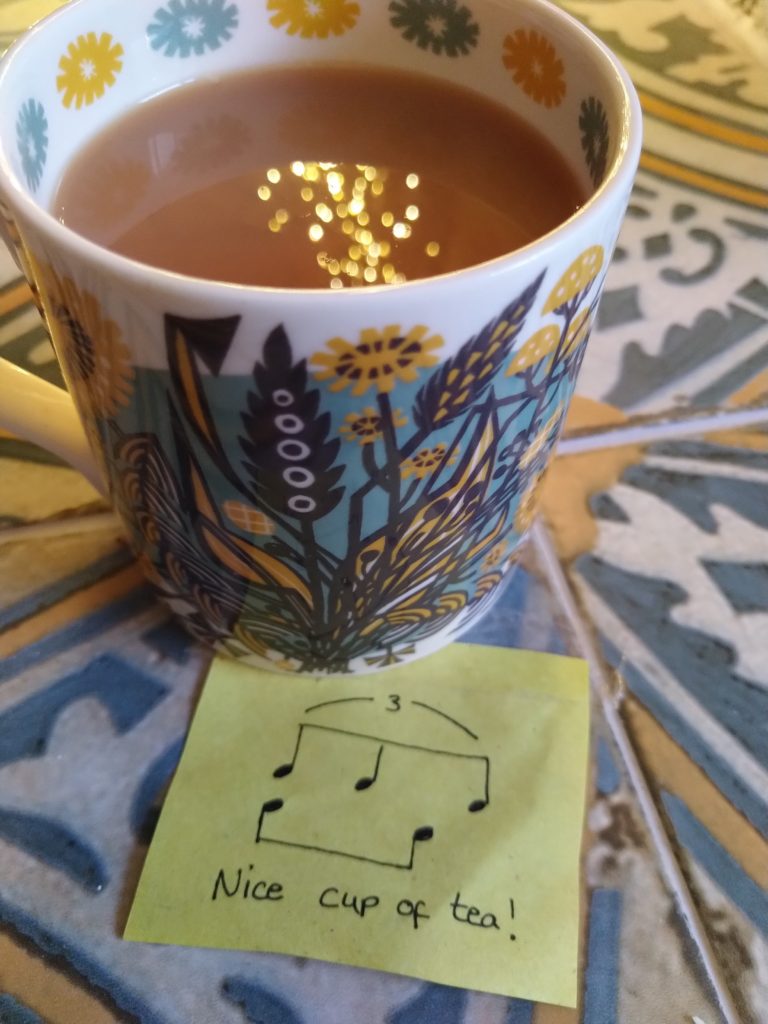Before we are even born, we hear rhythms. The first beat we hear is of course, our mother’s heartbeat in the womb. As new born babies we tune in to the rhythms and sounds of the languages being spoken around us. Nursery rhymes, sung to babies and toddlers for centuries with their repetition, catchy rhythms and rhyming words, help children to develop language skills.
The linguist in me LOVES using words and phrases to help build knowledge and understanding of rhythm in music. And of course, it’s got to be fun! As a food-based example, a basic “Crotchet Soup” helps to identify the number of beats (or syllables) in a word and involves collecting the things with the right number of beats together to fill a pot. A “Rhythm Shopping List” requires a student to choose the items whose rhythm (when spoken out loud) matches the rhythms written down on the shopping list (which can be as easy or as difficult as necessary).


And of course, my favourite – Nice Cup Of Tea, when said out loud in a natural way (not like a robot!), can be used perfectly to demonstrate a polyrhythm of triplets against duplets. When played out on the piano between two hands, these kinds of rhythms can be hard to do. But if we add words or a phrase to help us grasp the rhythm, it gets loads easier. Chopin has a whole Nocturne with this rhythm, and they’re all over Debussy and in the jazz standards.

We’re born with an innate ability to acquire language, and our natural understanding of the rhythms of our language can help us immensely in our ability to play and understand music too.
